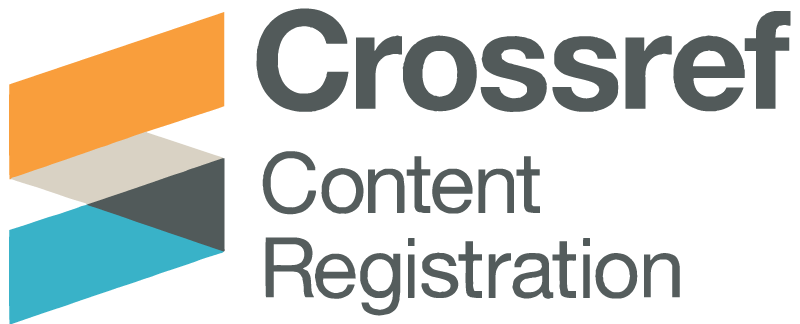في عملية تلبيد الليزر GF PA3200 التحقيق في خصائص تدهور مسحوق
DOI:
https://doi.org/10.59743/aujas.v6i2.736الكلمات المفتاحية:
مادة polyamide GF (PA3200) GF و النايلون، السلوك الحراري، معدل التدفق الذوبانالملخص
تم تصميم هذه الدراسة للتحقيق في سلوك polyamide GF (PA3200) GF والنايلون 12 بسبب تدهور المسحوق. لوصف وفهم هذه الأسباب لإيجاد نهج منظم لتحسين جودة الأجزاء وتقليل نسيج قشر البرتقال. تم دراسة السلوك الحراري للبوليمر ومعدل تدفق الانصهار (MFR) للمسحوق النقي والمعاد تدويره عن طريق قياس المسعر التفاضلي (DSC) ، واختبار معدل التدفق الذائب (MFR). أشارت نتائج DSC إلى أن درجات حرارة التحولات الثلاثة قد تأثرت بإعادة المعالجة (عدد الدورات). أظهر اختبار MFR أن معدل تدفق الانصهار لمسحوق الزجاج المملوء (PA3200) قد انخفض بسبب درجة الحرارة والوقت وإعادة المعالجة. المشكلة الرئيسية المتعلقة بهذه الممارسة هي كيفية اختيار الكمية المناسبة من المسحوق المعاد تدويره ليتم مزجه مع المسحوق البكر ، من أجل الحصول على مواد ذات خصائص جيدة ، لا تظهر اختلافًا كبيرًا عن المسحوق البكر ، دون تدهور كبير في خصائص المادة النهائية فيما يتعلق بالنقي. ومع ذلك ، فقد تدهورت جودتها بسبب تعرضها لساعات طويلة في درجات حرارة مرتفعة مما تسبب في تغيير بنية السلسلة الجزيئية والخصائص الحرارية. لهذا السبب ووفقًا لشركات أنظمة EOS و 3D ، استخدم هذا البحث 50٪ من المسحوق القديم ممزوجًا مع مسحوق خام النقي بنسبة 50٪.
المراجع
D.T. Pham & S.S. Dimov Rapid Manufacturing the Technologies &Applications of Rapid prototyping &Rapid Tooling, 2000, University of Cardiff, Springer London, UK. DOI: https://doi.org/10.1007/978-1-4471-0703-3_5
Kenneth G. Cooper, Rapid Prototyping Technology Selection and application, 2001 by Marcel Dekker, Inc. New York.
William Palm, Rapid prototyping primer, (May 1998), revised 30 July 2002, Penn State.
P. F. Jacobs, editor. RAPID PROTOTYPING &MANUFACTURING: Fundamentals of Stereolithography. SME, 1992.
Neal K. Vail, Joel W. Barlow and Harris l. Marcus,A thermal model of during selective laser sintering of polymer coated ceramic powders, rapid prototyping journal, Vol.2, No.3, 1996, pp. 24-40. DOI: https://doi.org/10.1108/13552549610129764
Francesco La. Mantia, Handbook of plastics Recycling, Rapra Technology, UK, 2002.
N.J. Mills Plastics Microstructure & Engineering Applications, University of Birmingham, second edition,UK, 1993.
Y. Shi, Z. Li. , S. Huang and Zeng, Effect of the properties of the polymer materials on the quality of selective laser sintering parts, IMech 2004, University of science and Technology, Wuhan, China. DOI: https://doi.org/10.1177/146442070421800308
J. P. Kruth, P. Mercelis, J. Van Vaerenbergh, L. Froyen, M. Rombouts, Binding mechanisms in selective laser sinering and selective laser melting, rapid prototyping journal, Vol.1, No.1, 2005, pp. 26-36. DOI: https://doi.org/10.1108/13552540510573365
Deborah M. Cottrill, a Thermal Study of the Selective Laser Sintering Process, University of Wisconsion- Platteville, 2004.
Tim Gornet, Improving selective laser sintering consistency, University of Louisville, 2002.
Valdek MIKLI, Helmo KAERDI, Priit KULU, and Michal BESSTERCI. ‘Characterization of Powder Particle morphology’ proc. Estonian Acad.Sci.Eng.,2001,7,1,22-34. DOI: https://doi.org/10.3176/eng.2001.1.03
DTM, The sinterstoin 2000 system Guide to Materials Nylon Compounds, DTM, 1995.
Somos 201 for EOSINT P www. eos.info, material Data Somosen.doc.spacifications of polyamide glass filled GF EOS
Jupiter P. de. Souza, Sundar V. Atre, Pavan K. suri, Julian A. Thomas and Randall M. German, Understanding homogeneity of powder- polymer mixtures- effect of mixing on tungdten powder injection molding feedstock, University of Pennsylvania State,2002.
S.W.O., Instruction Manual of Meltfiler MT, by THermao Haake, 2000.
D. T. Pham, K.D. Dotchev, Wang Yusoff, Deteriortion of polyamide powder properties in the laser sinerting process, University of Cardiff, 2006.
http: // www. Materialdatacenter.com/cwv/matdb/matdb.phd.,2005.
Plastics determination of the melt mass flow rate (MFR) and the melt volume flow rate (MVR) of thermoplastics, BS-EN ISO 1133-2005.
W. j. Sichina, DSC as Problem Solving Tool: Measurement of Crystallinity of Thermoplastics, U.S.A.
web.utk.edu /~mse /pages/ Textiles/polymer%20Crysallinity.
Ian Gibson and Dongping Shi, Material properties and fabrication parameters in selective laser sintering process, University of Hong Kong, rapid prototyping journal, Vol.3, No.4, 1996, pp. 129-136. DOI: https://doi.org/10.1108/13552549710191836
J.M.G. Cowie, polymers: Chemistry& physics of modern materials, University of stirling 1973.
Childs and A. E. Tontowi Selective laser sintering of a crystalline and a glass- filled crystalline polymer: experiments and simulations, 2001, University of Leeds,UK. DOI: https://doi.org/10.1243/0954405011519330
التنزيلات
منشور
كيفية الاقتباس
إصدار
القسم
الرخصة
الحقوق الفكرية (c) 2021 محمود عبيد ، محمود هامل، محمد الزابطي ، عبدالمحسن دخيل

هذا العمل مرخص بموجب Creative Commons Attribution 4.0 International License.
تتعلق الحقوق بنشر وتوزيع البحوث المنشورة في مجلة الجامعة الأسمرية، حيث توضح للمؤلفين الذين نشروا مقالاتهم في مجلة الجامعة الأسمرية، كيفية استخدام أو توزيع مقالاتهم، والاحتفاظ بجميع حقوقهم في المصنفات المنشورة، مثل (على سبيل المثال لا الحصر) الحقوق التالية:
- حقوق الطبع والنشر وحقوق الملكية الأخرى المتعلقة بالمقال المقدم، مثل حقوق براءات الاختراع.
- استخدام البحث المنشور في مجلة الجامعة الأسمرية في الأعمال المستقبلية الخاصة بالمؤلفين، بما في ذلك المحاضرات والكتب، والحق في إعادة إنتاج المقالات لأغراضهم الخاصة، والحق في الأرشفة الذاتية لمقالاتهم.
- الحق في الدخول في مقال منفصل، أو للتوزيع غير الحصري لمقالاتهم مع الإقرار بنشره الأولي في مجلة الجامعة الأسمرية.
الحقوق الفكرية: وفق الرخصة الدولية للأعمال الإبداعية المشاعة، النسخة 4.0.
بيان الخصوصية: سيتم استخدام الأسماء وعناوين البريد الإلكتروني التي تم إدخالها في موقع مجلة الجامعة الأسمرية للأغراض المذكورة فقط والتي استخدمت من أجلها.










